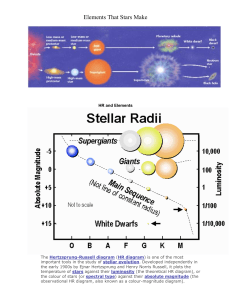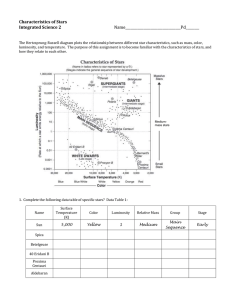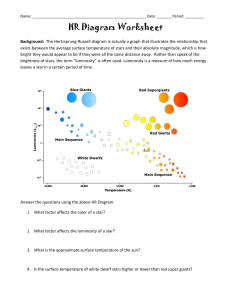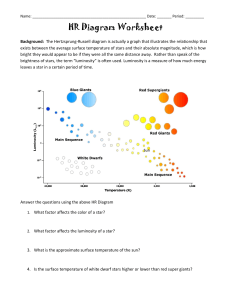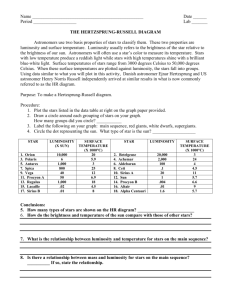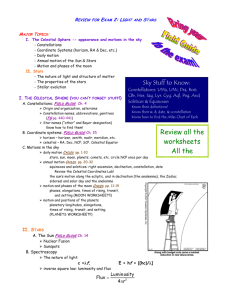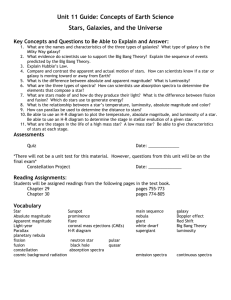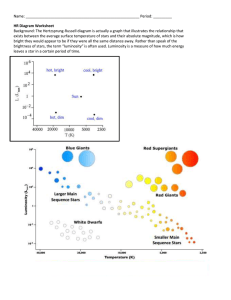Problem Set 4: Ch 16: 2 What is Kelvin
advertisement
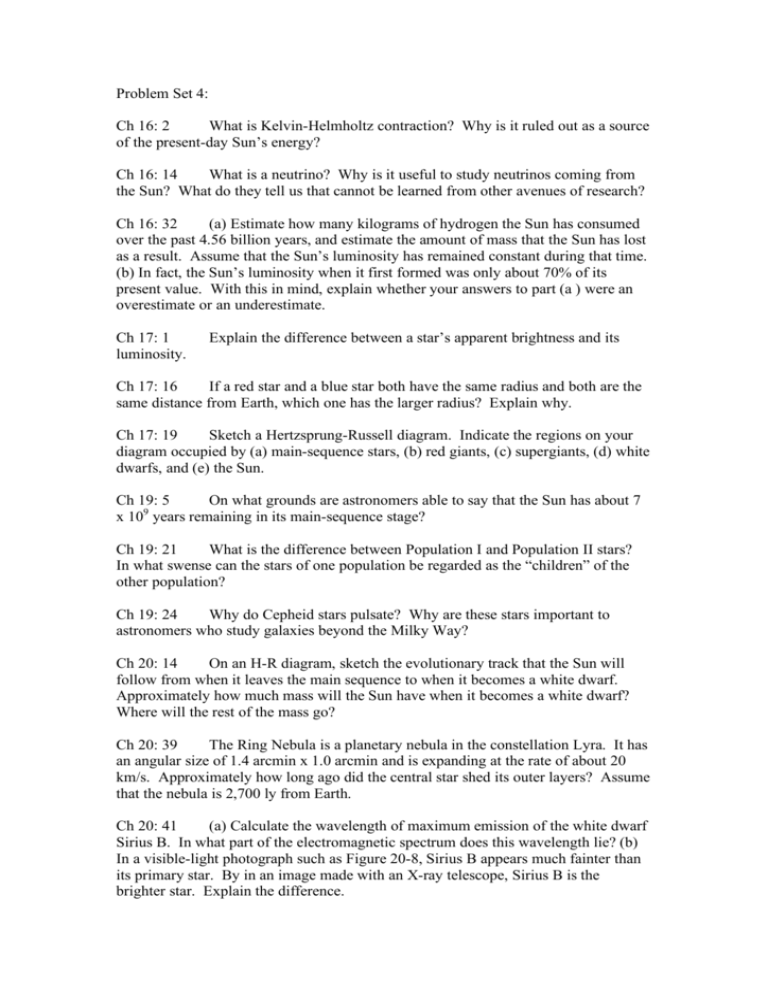
Problem Set 4: Ch 16: 2 What is Kelvin-Helmholtz contraction? Why is it ruled out as a source of the present-day Sun’s energy? Ch 16: 14 What is a neutrino? Why is it useful to study neutrinos coming from the Sun? What do they tell us that cannot be learned from other avenues of research? Ch 16: 32 (a) Estimate how many kilograms of hydrogen the Sun has consumed over the past 4.56 billion years, and estimate the amount of mass that the Sun has lost as a result. Assume that the Sun’s luminosity has remained constant during that time. (b) In fact, the Sun’s luminosity when it first formed was only about 70% of its present value. With this in mind, explain whether your answers to part (a ) were an overestimate or an underestimate. Ch 17: 1 luminosity. Explain the difference between a star’s apparent brightness and its Ch 17: 16 If a red star and a blue star both have the same radius and both are the same distance from Earth, which one has the larger radius? Explain why. Ch 17: 19 Sketch a Hertzsprung-Russell diagram. Indicate the regions on your diagram occupied by (a) main-sequence stars, (b) red giants, (c) supergiants, (d) white dwarfs, and (e) the Sun. Ch 19: 5 On what grounds are astronomers able to say that the Sun has about 7 9 x 10 years remaining in its main-sequence stage? Ch 19: 21 What is the difference between Population I and Population II stars? In what swense can the stars of one population be regarded as the “children” of the other population? Ch 19: 24 Why do Cepheid stars pulsate? Why are these stars important to astronomers who study galaxies beyond the Milky Way? Ch 20: 14 On an H-R diagram, sketch the evolutionary track that the Sun will follow from when it leaves the main sequence to when it becomes a white dwarf. Approximately how much mass will the Sun have when it becomes a white dwarf? Where will the rest of the mass go? Ch 20: 39 The Ring Nebula is a planetary nebula in the constellation Lyra. It has an angular size of 1.4 arcmin x 1.0 arcmin and is expanding at the rate of about 20 km/s. Approximately how long ago did the central star shed its outer layers? Assume that the nebula is 2,700 ly from Earth. Ch 20: 41 (a) Calculate the wavelength of maximum emission of the white dwarf Sirius B. In what part of the electromagnetic spectrum does this wavelength lie? (b) In a visible-light photograph such as Figure 20-8, Sirius B appears much fainter than its primary star. By in an image made with an X-ray telescope, Sirius B is the brighter star. Explain the difference.
